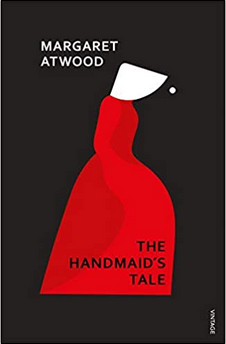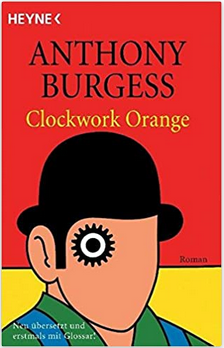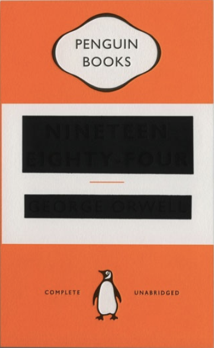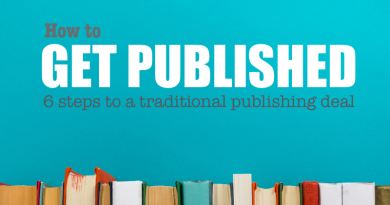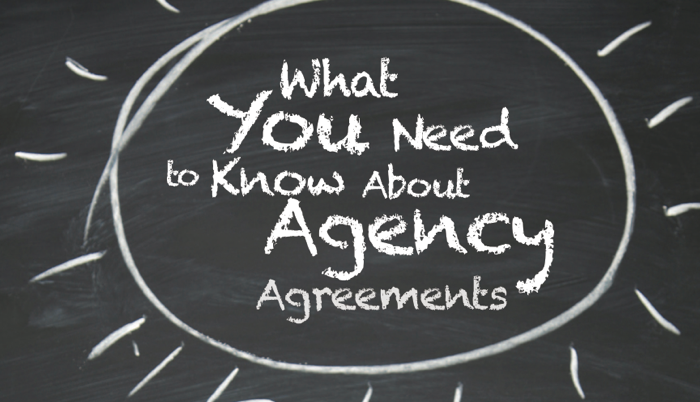The book publishing process – an 8-step guide
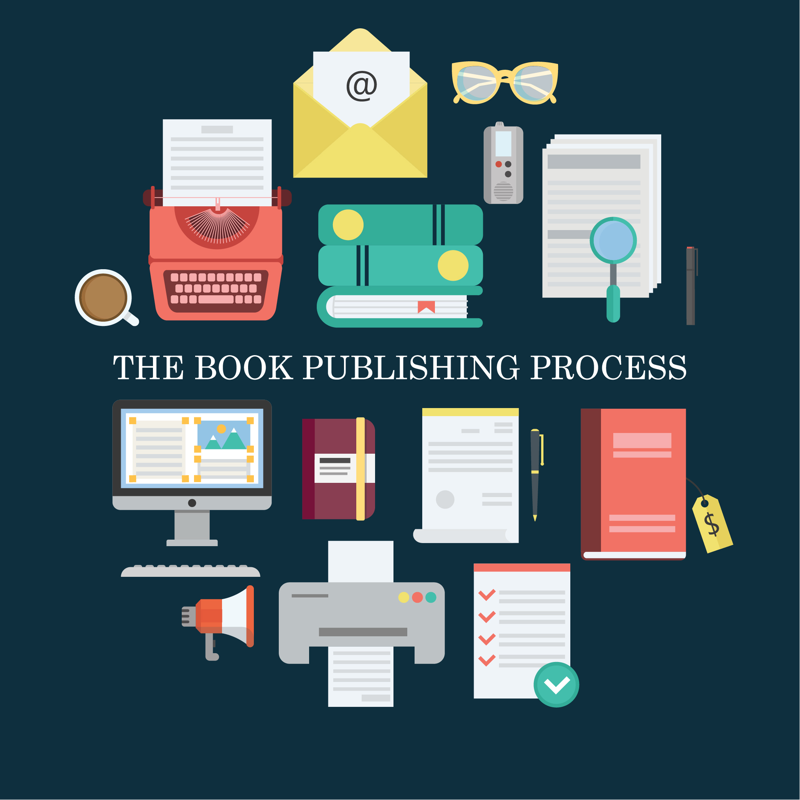
If you’re a new author, the book publishing process can seem bewildering. Just how does your manuscript end up as a book? Here’s a simple eight-step guide to how it works.
For a jargon-busting glossary, download our free A-Z of Publishing Terms.
The book publishing process can seem opaque to new authors. Publishing a book is a special, almost magical thing. Something that was in your thoughts and imagination – a new idea, some valuable information, a whole fantastical world you’ve dreamed up – gets transferred from your head into many other people’s heads, via some ink on a page or pixels on a screen. These are people you may never meet, but their lives may be transformed by what you’ve written.
But what happens in between your head and their heads? What are the key stages, how long does it take, and what will you have to do? There’s no reason you should know any of this – unless you have some experience of working in a publishing house. Here’s how the publishing process works.
The book publishing process at a glance
- Idea. All books start with an idea. This may come from you, your agent or a publisher.
- Acquisition. The book acquisition, or commissioning process, is how a new book gets signed up by a publishing company – usually by a commissioning editor. If you write fiction, you’ll need an agent.
- Design. A cover designer interprets your book into an eye-catching, ‘pickupable’ cover.
- Production. The technical process of how a raw manuscript is transformed into a physical (and digital) book.
- Marketing. How readers get to know about your book. May include advertising, online and social media marketing – and even guerrilla marketing.
- Publicity. Related to marketing, a publicist will get people talking about your book in the media – and may get you writing for newspapers and speaking at literary festivals.
- Sales. Sales reps sell your book to bookshops and other retailers, including online retailers such as Amazon.
- Distribution. The logistics end of the business – from printer to warehouse to bookshop.
The book publishing process
Here’s a more detailed, eight-step guide to the book publishing process. Whatever you’re writing, your book will follow this same basic workflow. Note that the timeline of what happens when isn’t completely linear – some of these stages will overlap. It takes many teams in different departments to publish a book, and they will work together from the start.
1. Idea
You’ve had a brilliant idea for a book! What now? All books start as an idea. But, while that idea usually comes from the author, it can also come from an editor or literary agent. Ideas can come from:
- You. If you’re a first-time novelist, the idea will almost certainly be yours alone.
- Publisher. If you’re an academic, or write business books or other non-fiction, the idea may come from a publisher, based on their knowledge of the market.
- Agent. If you’re an established author – in any genre – and have a literary agent, you will have regular meetings and discussions with your agent about your career. Have lots of ideas for your next book? Your agent may guide you towards the one to focus on. He or she may also come to you with an idea, based in their knowledge of what publishers are looking for, what’s current in the market, and what fits your strengths.
Wherever an idea comes from, it’s you who’s going to have to write it – so make sure it’s something that can sustain your interest over the long process of writing!
2. Acquisition
The book acquisition, or commissioning process, is how a new book gets signed up by a publishing company. It is the responsibility of a publisher who may have a job title such as editor, senior editor, publisher or editorial director. These job titles mean slightly different things depending on the type of publisher. In academic publishing, editorial director or publishing director means you’re responsible for the editorial department and have a team of commissioning editors (I know because I was one). In fiction, editorial director tends to mean a commissioning editor responsible for a specific imprint of that company.
Whatever the title of the editorial person you work with in a publishing company, they will be your main point of contact as an author throughout the publishing process of your book – from manuscript to published book. Though you will interact with people from other departments from time to time too.
Your editor’s main job is to acquire, or commission, new books. This works a little differently depending on the type of publishing company:
- Fiction. Almost exclusively via literary agents. Don’t even think of sending your manuscript to a publisher, in the hope of being discovered in the ‘slush pile.’ This doesn’t happen any more (if it ever did). Editors in fiction houses have good relationships with a range of literary agents. Your agent will pitch your book to the publisher or publishers they think will be interested and who are a good fit. This means that, for fiction authors, your most important first step is to get a literary agent.
- Academic. If you’re an academic, an editor may approach you with an idea, based on your reputation, research or course you teach. I used to do this all the time when I when I was a textbook publisher. Editors would go ‘campus calling’. We would visit university campuses to speak to lecturers about their courses, what textbooks they were using – and what books they were writing, wanted to write – or could be persuaded to write. As an editor, I would often help academics work up a book proposal and develop an idea.
- Non-fiction. For other non-fiction, it can happen either way round. It depends on the type of non-fiction. Memoir is considered a literary form, and goes the same route as fiction (via an agent). Business books may or may not be agented. My traditionally published book, Get Up to Speed with Online Marketing, was published by Pearson Business (2nd edition, 2013), and I didn’t have an agent. The process was more similar to academic publishing. But I did have access to the legal experts at the Society of Authors to look over and offer feedback on my publishing contract.
Your editor is the key lynchpin, from your point of view as an author. They’ll track the pogress of your book throughout the production cycle. They’ll liaise not only with you and your agent, but with other in-house departments, such as design, production, marketing and sales. It’s really a project management role – once a book has been commissioned.
In order for a book to be taken on by a publishing company, your editor has to persuade their colleagues. So it pays to have an editor who is enthusiastic about your book and will champion it in-house. Publishing companies have a regular editorial meeting or publishing meeting, at which editors present potential new titles for publication. Other key departments also attend this meeting, such as marketing, sales and production.
Each title must have its own ‘P&L’ (profit and loss), i.e. a set of costings. How much will it cost to produce the book? How many copies will we print? How many can we expect to sell? At what price? This all comes together in a book proposal put together by an editor, of which your book proposal as an author is only one part. It includes competition analysis, market analysis, and a detailed costings spreadsheet.
Everyone at the meeting must agree to the book being taken on – though there may be a discussion about price, print run, production costs and other aspects of the publishing strategy. The project may need to come back to the meeting with changes or new costings following these discussions. But, in practice, most books are accepted at these meetings – simply because they (should) have been thoroughly discussed with all departments concerned in advance, each of which will have contributed something to the proposal being discussed.
Once accepted, the next stages can begin.
3. Design
Design is one of the most creative parts of the book publishing process. Book cover designers can come up with astonishing, memorable representations of the books they work on. Think about The Handmaid’s Tale, A Clockwork Orange and Nineteen-Eighty Four – a book with a vast number of covers over the years – but the 2013 ‘censored’ re-release is particularly arresting.
Dystopian literature aside, whatever you write – from children’s to chick-lit, from textbooks to gardening books, a good designer helps sell your book.
It’s a designer’s job to create an intriguing, attractive, enticing cover that faithfully represents your book, and makes people want to pick it up in a bookshop to learn more about it. You want a book cover that publishers call ‘pickupable’. And that applies just as much to online bookstores – if not more so. To work on Amazon, your cover must also catch the eye when viewed at the small sizes you get in search results. And ideally have a readable title too. It’s a tall order – but all in a day’s work for a cover designer.
The cover designer may be in-house or freelance. Many publishing houses use both – and I’ve worked with both. They will usually be briefed by a combination of editor and marketer, and there will likely be several iterations of a cover. Your publisher will brief the designer on your book, its target readership, and enough of its content for them to make some informed design choices. They may include some design preferences such as colours, whether it should be photographic or graphic – and you may get a chance to input into this (but you may not). The publisher will also brief on technical requirements, such as size and spine width. If the book is part of a series, this will be a key part of the brief, as the cover will need to be consistent with an overall series design.
The publisher may then be presented with half a dozen ‘cover roughs’, based on the brief, of which one may be worked up into a final cover. You may not see all the roughs – but you should be consulted about the cover design at some stage. Even if your publisher does get to make the final choice.
4. Production
This is the part of the book publishing process that turns your raw manuscript into a physical book. And likely a digital book too. And an audiobook. You’ve sent in a stack of A4 printed paper, neatly double-spaced. Or, more likely these days, you’ve emailed a Word document to your editor. All those words you’ve finally released into the world.
But your publisher doesn’t just slap a cover on it and put it in a shop. There’s a LOT of work to do to transform your text into a beautifully-produced actual book. This is, in fact, the longest part of the process. It can take a year or more from delivery of your final manuscript until you see your book on the shelf of your local bookshop.
Yes, publishers can move faster, especially if there’s an urgent, topical reason to get a book out quickly. But this lead time often isn’t purely about how long the physical production process takes. It’s also about picking the right release date for your book to give it maximum exposure. Is your book a perfect summer read? Publish it in the spring. Is it an ideal Christmas gift? Publish it in October. ‘Super Thursday’ – the first Thursday in October – is the big autumn release date for trade hardbacks targeting the Christmas market. Then again, there are SO many titles published on this day, your publisher may want to pick another date so you don’t get lost in the crowd. It all depends on your book, it’s market, and the marketing plan.
Here are some of the people you can expect to meet along the – possibly long – production journey.
A production editor is likely to be the in-house staff member in charge of this stage, and will liaise with editorial and design. Production editors work with text designers, copy editors, typesetters and proof readers. These are freelancers, and you can expect to hear from them too – particularly your copy editor.
- A text designer isn’t someone you’re likely to deal with much, unless your book has lots of complicated textual features. I used to work with text designers from time to time as a textbook publisher. They would work on large texts that had heavily designed elements, such as chapter summaries, bullet points, questions and quizzes, boxes, case studies, illustrations and so on. Sometimes the author would see some sample designed pages in advance. A good text designer will create an engaging textbook design with elements that hang together on the page, and make the material clear and readable.
- A copy editor is your best friend – and the person you will hear from most. They will send you queries – lots of queries – and will make your words better. They will check for consistency, readability, sense, structure, typos and more. They will even fact-check. This is important. If you’ve written a novel set in the 1970s and your young protagonist takes a £5 note from the fruit bowl to spend at the local funfair, your copy editor will say: “Hang on – that would be about £100 in today’s money. It should be 50p?” A good copy editor is worth their weight in gold.
- A typesetter is someone who, in the olden days, used to literally set physical, metal type into printing presses. Today it’s a digital process. Though we still call the spacing between lines ‘leading’ (it used to be actual strips of lead). Typesetting includes the choice of typeface for the text of your book and its chapter headings and subheadings, and other textual elements. They may work with a text designer. If you look in the inside pages – the prelims – of any published book, you may see in the credits something like: ‘Typeset in Bembo by Palimpsest Book Production Limited, Falkirk, Stirlingshire.’ (I took that from On Writing, in case you were wondering.)
- A proof reader comes in towards the end of the process, reads your almost-final book (your proof), and makes any last-minute corrections. This isn’t a read for sense, facts, structure and so on. It’s too late for that now. This is a read for spelling mistakes and typos. Yes, there will still be some at this stage. Possibly quite a lot. It’s why, when publicists send out ‘proof copies’ in advance of publication, to journalists, book reviewers, book bloggers, and anyone else who might be able to help with the promotion of the book, they always have, printed on the cover: ‘UNCORRECTED PROOF – NOT FOR SALE OR QUOTATION’. This isn’t a version of your book you want just anyone to see – yet. Those of us who read books at this stage know there will be some mistakes. It’s fine, it’s expected. But you really don’t want a general reader judging your work at this stage. By the time a proof reader is done, your book will be largely mistake-free. But not completely. No published book is. You proof and you proof, and still a few errors slip through. (It’s why I like online content – you can correct your mistakes, and no one will know!)
At the end of all that, print-ready PDFs are sent to a printer, along with the final book cover design files. The printer prints and binds copies, and sends the to the warehouse (see Distribution).
Digital production will happen at the same time, to turn the final, edited version of your book into an ebook. This is a technical job, and will mean your book is available in a variety of digital formats for different ereaders and platforms.
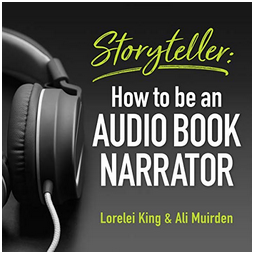 Audio production may or may not happen, and may come later if it does. But if you do have an audiobook version of your book, you will be involved. You may even be asked to read it yourself! Or you may be consulted on which actor(s) would be on your wish list to read it. Provide a range of options – and aim high! Don’t be intimidated by the fame of an actor if you think they would be perfect to read your work. But provide some realistic options too, in case your top choice isn’t available. And think too about less-famous readers who would do a brilliant job of bringing your words to life. Listen to audiobooks yourself.
Audio production may or may not happen, and may come later if it does. But if you do have an audiobook version of your book, you will be involved. You may even be asked to read it yourself! Or you may be consulted on which actor(s) would be on your wish list to read it. Provide a range of options – and aim high! Don’t be intimidated by the fame of an actor if you think they would be perfect to read your work. But provide some realistic options too, in case your top choice isn’t available. And think too about less-famous readers who would do a brilliant job of bringing your words to life. Listen to audiobooks yourself.
Audiobook narration is a very specific skill – especially if your book has a lot of different characters who all need to be clearly distinguished by a listener. For more insights into the business of audiobook narration, I recommend Storyteller: How to be an Audio Book Narrator by Lorelei King and Ali Muirden. This is essential listening – especially if you’re narrating your own book!
5. Marketing
Congratulations! You have an actual, physical, printed book! And a digital one. And possibly an audio one. Now: does anyone actually know about it? This is where marketing comes in – and why it starts EARLY. You may work with the marketing manager for your book – or you’ll liaise with your editor, who will. Either way, marketing is an essential, and central, part of the book publishing process.
You may even meet a marketing manager before your book is signed up by the publisher. I know authors who, with their agent, have a meeting with a potential new editor who has shown an interest in their book. And the marketing manager is also at the meeting. Why? Because one question you and your agent want to know, early on, is: what will you do for my book? What marketing effort will you put behind it?
But even if you never meet the person responsible for the marketing plan for your book, there will be one. And it starts as soon as your book is commissioned. The actual marketing won’t start until about six months before your book publishes. Any sooner, and you risk building buzz about a book that everyone’s forgotten about by the time it comes out. But six months gives time to announce the book, start getting pre-orders on Amazon, tell bookshops about it, and tell journalists and book bloggers. Big publishers often have events for journalists and book bloggers, where they present their forthcoming titles. I’ve been to them. There may be half a dozen or so books, presented by the authors themselves, at an evening do with drinks and nibbles. So be prepared for that, if you’re asked to participate in such an event. They’re quite fun and friendly!
That’s all about initial awareness. It’s almost ‘pre-marketing’. What about the marketing that takes place once there’s something to buy? Depending on the budget available for your book (this may be tiny!) your publisher may run ad campaigns, from physical posters to digital banners and Facebook ads. They will have an online marketing plan, including social media, which they’ll want you to get involved with – especially if you have a social media presence (which you absolutely should). There may be an email marketing campaign, and you may need to take part in a blog tour (a series of guest postings).
There may even be more ‘guerrilla’-style marketing. I remember turning up to the London Book Fair a couple of years back, to find myself caught up in a protest. A dozen or so handmaids, straight out of Gilead, dressed in red robes and white bonnets, waving placards. It was, of course, pre-launch guerrilla marketing for Margaret Atwood’s The Testaments.
Whatever your publisher does for you marketing-wise, you will need to get involved yourself. This horrifies some authors, who would rather spend their time writing rather than marketing! If that’s you, take a look at these approaches and ideas for 10 ways to market your book if you really don’t like marketing.
6. Publicity
Publicity is closely related to marketing, and the two work hand-in-hand, with the same aim of connecting your book to your readers. But it is a separate activity, focused on a specific task: getting your book talked about in the media. That doesn’t necessarily mean on breakfast TV (though it might). It can mean anything from engaging with book bloggers to writing a piece for a national newspaper to speaking at a literary festivals to doing a book signing event at your local bookshop.
If you’re speaking at events, keep your publicist in the loop – they’ll want to know. And if your publicist has planned a series of events for you, they may come out on the road with you to support you.
7. Sales
Each aspect of the publishing process is about selling. You sell an idea to your agent, who sells it to an editor, who sells it to their colleagues to get it accepted. Then the finished book must then be sold to retailers, who sell it to their customers.
Every publisher has a sales team. Their job is to sell your book – but not to readers: to retailers. We’re talking about trade sales here – sales to the book trade, which includes chain and independent bookstores, and anywhere else books are sold – such as supermarkets. Sales to Amazon and other online retailers may be handled by a digital sales team or sales manager. Academic publishers will also have an academic sales team, whose job it is to get books on university reading lists. There may also be a library sales team, and special sales deals done with bulk orders to, say, institutions. But this is all to intermediaries rather than to the end reader. Unless it’s something called direct sales.
Publishers have sales reps who go out on the road, calling on bookshops in their territory and showing them what books they have coming out in the next six months. This involves flipping through a portfolio of cover designs with a few bullet points of marketing blurb. This is one reason cover design needs to happen reasonably early in the process.
Booksellers are busy people (I know – I used to be one). They have customers to serve, and a sales rep will typically be showing their wares on the shop floor while people are milling about. There may only be seconds to show each book, and for the bookseller to make a decision about how many copies to order (if any). So reps must be really focused about they key selling points of your book, and the cover must do its job.
It helps if the bookseller has done well with a similar title in the past. But a bookseller will often take a punt on a new author with no track record, if the concept is compelling enough – and if the publisher is supporting it with some marketing and publicity effort. So a rep will often also talk about what the publisher is doing in terms of advertising, promotion and media.
Booksellers buy books at a discount off the recommended retail price – typically around 30%. This is their margin. The biggest retailers with the most buying power – Amazon and supermarkets – demand the biggest discounts. The risks are low for retailers, because books are usually sold to them on a ‘sale or return’ basis. If they sell your book – great! If not, they can return copies and get their money back.
The other thing a sales department does is keep their fingers on the pulse of the book market – and feed that market intelligence back to the publisher. This can then inform commissioning decisions, in a sort of feedback loop.
Sales reps are at the hard edge of what readers actually want. Booksellers know their market, and what their readers are buying. This informs their buying decisions. Sales reps have an easier job selling to bookshops if their wares match what a bookseller can actually sell. However much other departments may love and believe in a book, there’s no hiding place when it comes to cold, hard sales. Even if a bookseller takes multiple copies of a book they like, if they don’t actually sell it, it gets returned. Readers ultimately determine the success of any title.
8. Distribution
This is the logistics end of the business. Your book is published, everyone knows about it, there’s some media buzz, you’ve been on Radio 4, and bookshops have ordered lots of copies. Now the copies need to get from printer to warehouse – and warehouse to bookshop. Orders are processed and books are delivered. Wholesalers are the intermediaries here. There are a handful of book distributors in the UK, who bookshops order from. The largest of these is Gardners.
Some larger publishers distribute their own books. Hachette also owns book wholesalers Bookpoint and LBS – all of which are now part of Hachette Distribution. Macmillan (where I used to work) has a separate business unit, Macmillan Distribution, which not only distributes Macmillan titles but books from a wide range of other publishers, including Bloomsbury.
Professional authors know the book publishing process
Now you understand the book publishing process, you’ll be better equipped to navigate your path to publication. You won’t have any nasty surprises – like discovering it can take 18 months for your book to be published once you’ve submitted your final draft! You’ll go into publishing meetings better informed. Which means you’ll come across as a professional author who ‘gets’ the industry, knows what is expected of you – and what you should expect of your publisher. Now – go and finish that book!
Still confused? For a jargon-busting glossary, download our free A-Z of Publishing Terms.

